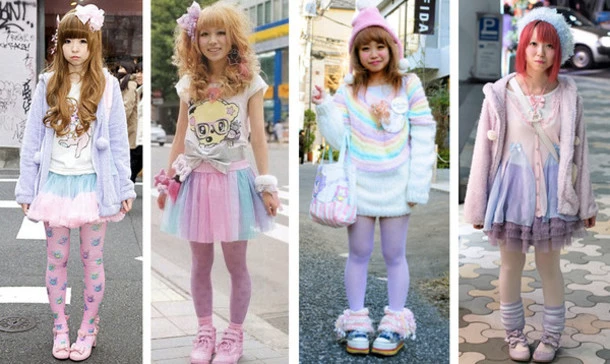Social media has profoundly impacted the global spread of kawaii clothing fashion, acting as a catalyst for its international popularity and accessibility. Originating in Japan during the 1970s, kawaii fashion is characterized by its cute, colorful, and often whimsical aesthetic, encompassing everything from pastel-colored dresses and oversized bows to playful accessories featuring cartoon characters. Initially a niche trend within Japanese subcultures, kawaii fashion began to gain international recognition as social media platforms like Instagram, TikTok, and Pinterest emerged. These platforms provide a dynamic space where fashion enthusiasts from all corners of the world can share their personal styles, inspirations, and creative looks. The visual nature of social media is particularly suited to showcasing kawaii fashion, which relies heavily on vibrant colors and distinctive patterns that are highly photogenic. Influencers and fashion bloggers have leveraged platforms like Instagram to post images and videos of themselves wearing kawaii outfits, often tagging brands and designers, which helps to create a global marketplace for these products.

The hashtag culture on social media further amplifies this effect; tags such as kawaii or kawaiifashion allow users to explore a plethora of content related to cute fashion, contributing to its viral spread. This widespread visibility not only increases consumer awareness but also encourages fashion brands to cater to an international audience, further fueling the global adoption of kawaii styles. TikTok, with its short-form video content and viral trends, has also played a significant role in popularizing kawaii fashion. The platform’s algorithm-driven feed promotes content based on user interests, making it easier for fashion trends to spread quickly. Creators often participate in challenges or trends that feature kawaii clothing, incorporating them into dance routines, style challenges, or comedic skits. This engagement helps to normalize and popularize kawaii fashion among diverse audiences who may not have previously been exposed to it. The interactive nature of TikTok also allows for immediate feedback and engagement, which helps in shaping and accelerating fashion trends.
This form of curation is particularly valuable for kawaii clothes fashion enthusiasts seeking to incorporate kawaii elements into their wardrobe, as it offers a practical resource for discovering new styles and trends. The impact of social media on kawaii fashion is not limited to just consumer trends; it also influences the production and distribution of these garments. Brands and designers use social media analytics to understand market demands and preferences, allowing them to tailor their collections to a global audience. Additionally, the direct interaction between consumers and brands through social media platforms has enabled more personalized and responsive fashion lines, with companies often engaging in direct feedback loops with their customers. In summary, social media has been instrumental in the globalization of kawaii fashion by providing platforms for visual sharing, trend dissemination, and interactive engagement. Through the power of hashtags, viral content, and digital curation, kawaii fashion has transcended its regional origins to become a beloved and accessible style for fashion enthusiasts worldwide.

